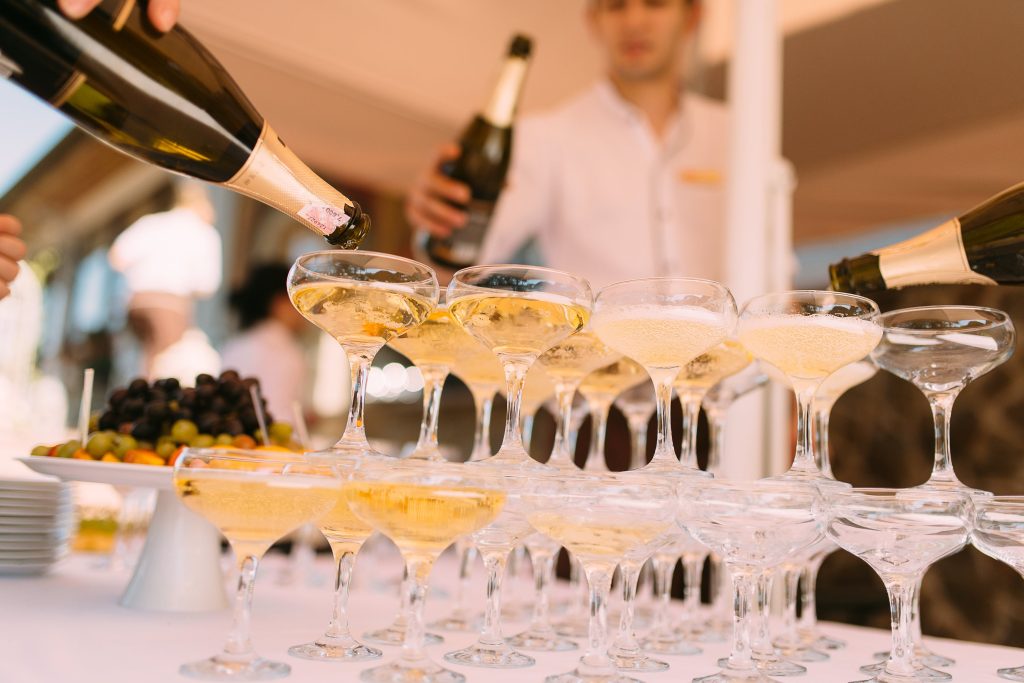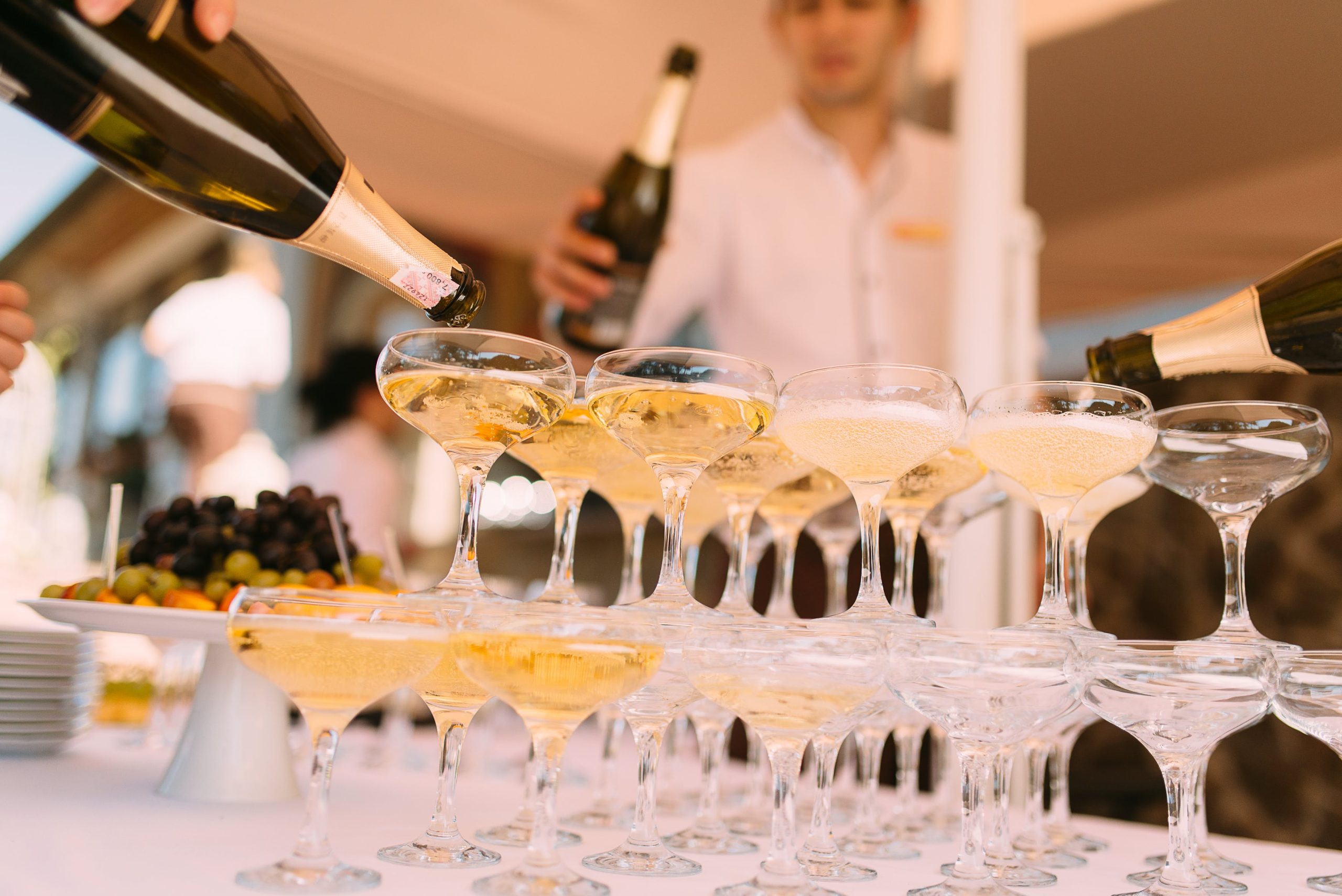By MONTE BELMONTE
For the Advocate
Dom Pérignon, the Benedictine monk, did not invent Champagne. But if you’ve seen his commercials with Lady Gaga, he will be happy to charge you $250 or more a bottle for it. Champagne is, first, a place. A place which our monk neither invented nor discovered. Champagne is also, of course, synonymous with sparkling wine originating in the Champagne region of France. Contrary to popular belief, Dom Pérignon did not invent sparkling wine. Most wine historians believe the earliest known evidence of bubbles in the bottle pop up in 1531, about 100 years before Dom (can I call him Dom?) was born. And those first known effervescences were not discovered in Champagne, but about 500 miles to Champagne’s south, nearer to the Spanish border, in the commune and subprefecture of Limoux.
In Limoux, they continue to make sparkling wine. They cannot legally call it “Champagne.” And why would they? It’s 500 miles south of Champagne. That would be like calling our Hadley asparagus “Saguenay, Canadian.” In Limoux, and eight other places in France, they make their sparkling wines in essentially the same manner that they make it in Champagne. But they call it “Crémant.” And while Dom charges upwards of $250 a bottle, and still other Champagnes like Salon charge over $1,200 a bottle, Crémants are often much more affordable. A quick search for Crémant de Limoux wines put most of them between $13 and $30. More my speed. Especially since I drink sparkling wine on many an eve, apart from just New Year’s. If you are not rich or feeling particularly lavish as 2023 comes to a close, and yet would still like to imbibe on tiny bubbles of actual Champagne when the countdown comes, here is a modicum of ebullient expertise.
If you want to buy Champagne that is any good you’re going to pay, at minimum, around $40 a bottle. There are lots of famous name brands that you have probably heard of. With some of those, you will be paying as much for the name as the level of quality. Veuve Clicquot is good. But you are gonna pay more because it is famous. Forget about the Champagnes that hip-hop made famous. Unless you are celebrating the 50th anniversary of hip-hop before the year ends. In that case splurge on a $250-plus bottle of Cristal. And pay for a Dom if you like it. In my opinion, Dom Pérignon is one of the more overrated Champagnes. I’ll take a Veuve over a Dom any day. And at half the price. There are other famous Champagnes that I think are worth it. For my money, Billecart Salmon is the bee’s knees.
Now, I will give you two completely contradictory pieces of Champagne advice. One: support local farmers and small producers of Champagne. You can know if your winemaker is a small family farm rather than a multinational corporation if you look for these two letters on the bottle “RM.” Those letters stand for Récoltant-Manipulant, meaning the winemaker grows, harvests, vinifies, bottles and sells their own Champagne, taking care of all the steps from cork to punt. “Punt” is a great wine word. It’s pronounced “poont” and it means the concave bottom of the bottle. It sounds dirty and I love it. RM Champagnes are informally referred to as “grower Champagnes.” They are a grower, not a show-er. There are other sets of letters to look out for on Champagne bottles but I’ll only mention one more — “NM.” That one stands for Négociant-Manipulant, which usually means a large Champagne “house.” Farmers=RM. Big Companies=NM. I prefer to support the little guy. And here is where I give you my contradictory piece of Champagne advice.
If you want really good cheap Champagne, go buy it at Costco. Costco has a signature brand called Kirkland. Kirkland labels appear on lots of products at Costco, including wine. And Kirkland labels appear on wine labeled as Champagne. In almost every single instance in the U.S., if the label says “Champagne,” it is actual Champagne. And Kirkland Champagne is no exception. But remember when I said that you couldn’t get good Champagne for less than $40? I lied. You can. It’s the Kirkland, and sometimes you can get it for around $20. I know I am always saying “shop local,” and “support our western Mass brick and mortar mom and pops,” but I will allow you to go buy one, and only one, case of Kirkland Champagne a year. All of your other wine purchases must be from smaller local-er stores.
Oh, and remember when I said if the label says “Champagne” it is Champagne? I lied again. Ever seen André California “Champagne?” Well guess what, it’s made in California and, hence, not Champagne. And the last time I had it, many years before I was the wine snob I am today, it gave me a raging headache. Even my unskilled self knew it was garbage. This goes for the other California “champagne” imposters like Cook’s and Korbel. How do they get away with calling it “Champagne?” It’s super complicated and has to do with the end of World War I, the Treaty of Versaille, and the onset of prohibition in the U.S. It is a fascinating bit of wine snob history, but that would be at least a whole column itself. Suffice it to say, if you want Champagne to end this year. You can do better than André, Cook’s and Korbel. Your 2024 self deserves it.
When it comes to sweetness levels in sparkling wines, how sweet a wine should be is a matter of taste. But there are easy ways to know how sweet the Champagne or other sparkling will be. “Doux” means wicked sweet, although I’ve never actually seen this on a bottle. “Demi-sec” is allegedly slightly less sweet but, to me, is unbearably sweet. “Sec” is also too sweet. I write this as I sit here sipping a Solera, which happens to be a very sweet style of dessert wine. “Extra sec” is how long it takes you to realize that this is also a sweet wine. If in the world of wine “dry” is the opposite of “sweet,” one would think “extra dry,” is extra not sweet. But “extra dry” is allegedly the exact same as extra sec, which took me an extra sec to look up, but appears to be true. “Brut” is where I think wine stops being sweet and starts getting interesting. Then there is “extra brut,” which is wonderfully austere. And then “brut nature” which can be paint-peelingly painful and that is part of why I love it. Also, a quick check of the alcohol content on a bottle can be very telling. Under 11% ABV, usually sweet. Less sweet the higher that number climbs.
This new year, toast with a real Champagne. It’s usually worth it to dish out that $40-plus bucks for a special occasion. When the special occasions are over, maybe taste some of France’s other sparklers, like the Crémants. Or Spain has its sparkling Cava. England likes to claim it invented sparkling wine and now has some affordable and delicious offerings, as well. After the clock counts down to midnight, and the celebrations are over, and the new year is underway, if you are having a rough day, remember that bubbles can sometimes make things a little better. Their vivacious effervescence can give you a renewed pétillant pep. Just like that time Dom Perignon never actually said the phrase that he is nonetheless famous for, “Come quickly, I am drinking the stars!”




